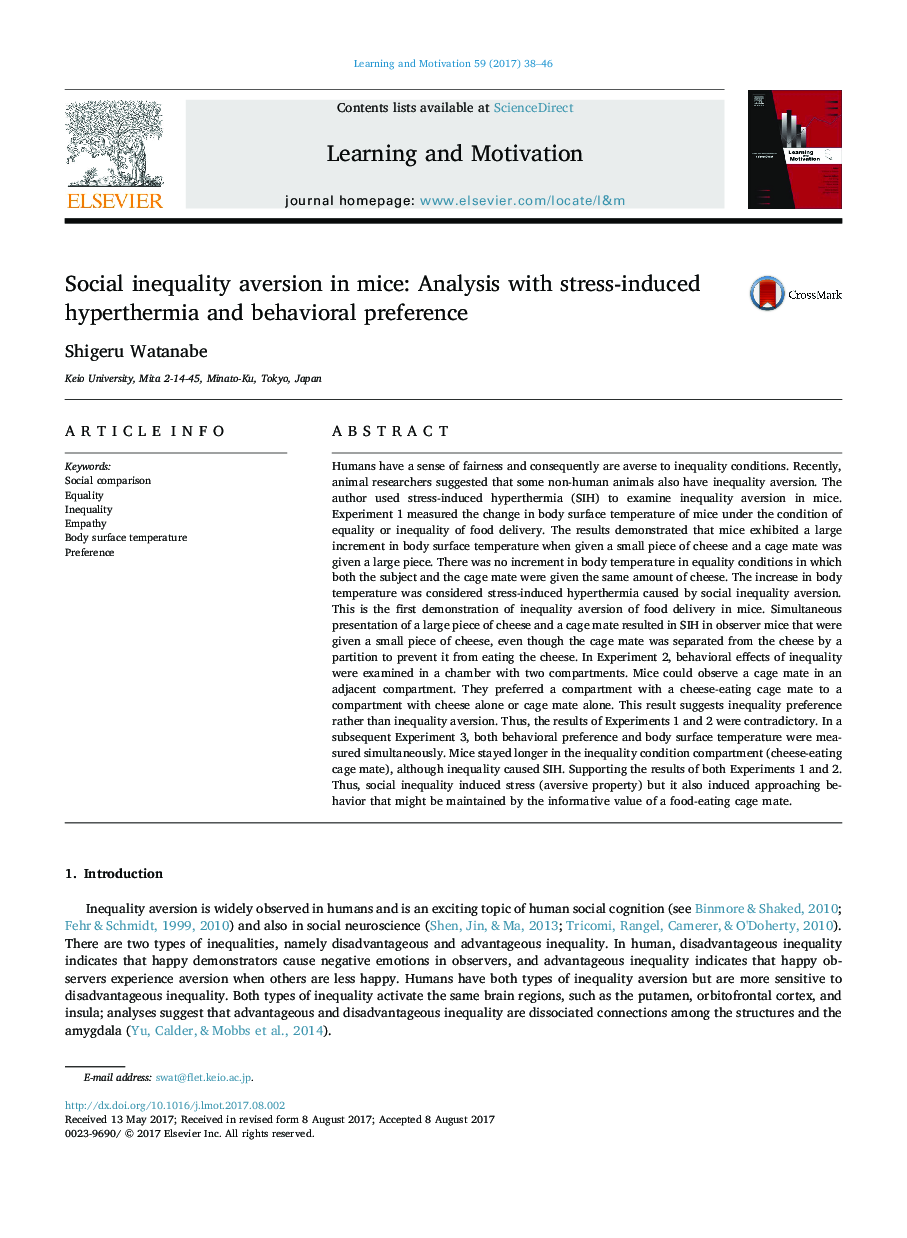| کد مقاله | کد نشریه | سال انتشار | مقاله انگلیسی | نسخه تمام متن |
|---|---|---|---|---|
| 5040101 | 1473509 | 2017 | 9 صفحه PDF | دانلود رایگان |
- Social inequality aversion is examined in food delivery situation.
- Mice display social inequality aversion detected by hyperthermia.
- Mice stay longer in the inequality situation in behavioral test.
- Thus, the mice approach to the inequality situation that caused aversion.
- This approaching behavior indicates informative value for the subjects.
Humans have a sense of fairness and consequently are averse to inequality conditions. Recently, animal researchers suggested that some non-human animals also have inequality aversion. The author used stress-induced hyperthermia (SIH) to examine inequality aversion in mice. Experiment 1 measured the change in body surface temperature of mice under the condition of equality or inequality of food delivery. The results demonstrated that mice exhibited a large increment in body surface temperature when given a small piece of cheese and a cage mate was given a large piece. There was no increment in body temperature in equality conditions in which both the subject and the cage mate were given the same amount of cheese. The increase in body temperature was considered stress-induced hyperthermia caused by social inequality aversion. This is the first demonstration of inequality aversion of food delivery in mice. Simultaneous presentation of a large piece of cheese and a cage mate resulted in SIH in observer mice that were given a small piece of cheese, even though the cage mate was separated from the cheese by a partition to prevent it from eating the cheese. In Experiment 2, behavioral effects of inequality were examined in a chamber with two compartments. Mice could observe a cage mate in an adjacent compartment. They preferred a compartment with a cheese-eating cage mate to a compartment with cheese alone or cage mate alone. This result suggests inequality preference rather than inequality aversion. Thus, the results of Experiments 1 and 2 were contradictory. In a subsequent Experiment 3, both behavioral preference and body surface temperature were measured simultaneously. Mice stayed longer in the inequality condition compartment (cheese-eating cage mate), although inequality caused SIH. Supporting the results of both Experiments 1 and 2. Thus, social inequality induced stress (aversive property) but it also induced approaching behavior that might be maintained by the informative value of a food-eating cage mate.
129
Journal: Learning and Motivation - Volume 59, August 2017, Pages 38-46
